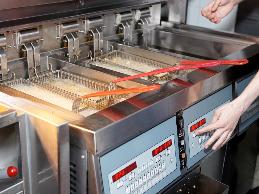On This Page
About Charcot-Marie-Tooth
Charcot-Marie-Tooth, or CMT, is the most common inherited neurological disorder. CMT is found world-wide in all races and ethnic groups. It was discovered in 1886 by three physicians, Jean-Marie-Charcot, Pierre Marie, and Howard Henry Tooth. CMT patients slowly lose feeling in their feet/legs and hands/arms as nerves to the extremities degenerate. The muscles in the extremities become weakened because of the loss of stimulation by the affected nerves. Additionally, there is a loss of sensory abilities.
Charcot-Marie-Tooth and the Americans with Disabilities Act
The ADA does not contain a definitive list of medical conditions that constitute disabilities. Instead, the ADA defines a person with a disability as someone who (1) has a physical or mental impairment that substantially limits one or more "major life activities," (2) has a record of such an impairment, or (3) is regarded as having such an impairment. For more information about how to determine whether a person has a disability under the ADA, see How to Determine Whether a Person Has a Disability under the Americans with Disabilities Act Amendments Act (ADAAA).
Accommodating Employees with Charcot-Marie-Tooth
People with CMT may develop some of the limitations discussed below, but seldom develop all of them. Also, the degree of limitation will vary among individuals. Be aware that not all people with CMT will need accommodations to perform their jobs and many others may only need a few accommodations. The following is only a sample of the possibilities available. Numerous other accommodation solutions may exist.
Questions to Consider:
- What limitations is the employee experiencing?
- How do these limitations affect the employee and the employee’s job performance?
- What specific job tasks are problematic as a result of these limitations?
- What accommodations are available to reduce or eliminate these problems? Are all possible resources being used to determine possible accommodations?
- Once accommodations are in place, would it be useful to meet with the employee to evaluate the effectiveness of the accommodations and to determine whether additional accommodations are needed?
- Do supervisory personnel and employees need training?
Key Accommodations
- Limiting lifting, reaching, pushing, and pulling by job restructuring
- Using Proper Lifting Techniques
- Reallocating lifting duties, if marginal
- Providing assistance moving objects, to reduce weight
- Organizing items in a way that reduces the need to move or lift items
- Reducing weight to be lifted by separating items into smaller groups
- Reassigning an employee to a modified duty position or modifying duties by removing the lifting duties
- Periodic rest breaks to get-up and move around
- Modified break schedule so that you can stretch your legs when needed
- Using break reminder software to remember to get up and move around
- Alternating between sitting and standing while working by using a sit/stand workstation
- Ergonomic/adjustable office chair
- Work at home, where employee can lie down, sit, stand, move freely
Accommodation Ideas:
Situations and Solutions:
The following situations and solutions are real-life examples of accommodations that were made by JAN customers. Because accommodations are made on a case-by-case basis, these examples may not be effective for every workplace but give you an idea about the types of accommodations that are possible.
JAN Publications & Articles Regarding Charcot-Marie-Tooth
Publications
Consultants' Corner Articles
Articles
- No Articles available for Charcot-Marie-Tooth
Blog Posts
- No Blog Posts available for Charcot-Marie-Tooth






